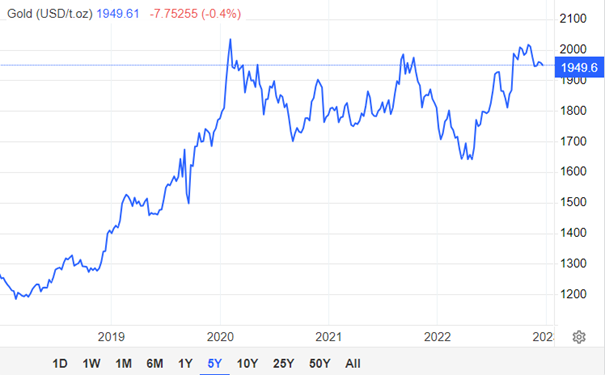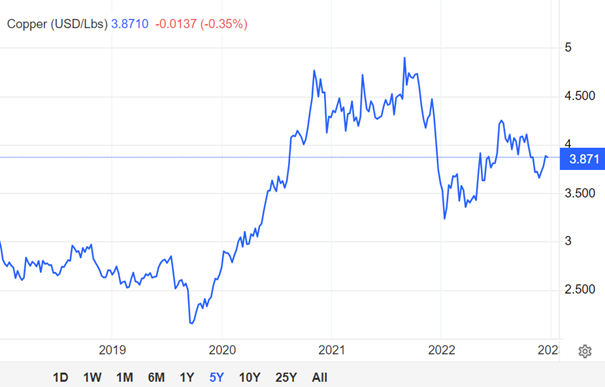
Movement of Gold prices in the last five years. (Source: Trading Economics) *
I decided to check if there are any news, why all the price was moving as it was. And it did not take me long to find few articles, supporting just what I saw. Article on Reuters said that Gold remained within a narrow trading range this week, despite experiencing significant fluctuations, as conflicting signals from the Federal Reserve and the U.S. economy provided little clarity for a decisive move in either direction. Spot gold and gold futures held steady, with minor losses of between 0.1% and 0.3% for the week.* The Federal Reserve announced no change in its benchmark rate and indicated the likelihood of two more rate hikes this year to address rising inflation.
However, underwhelming economic data, including soft consumer inflation, higher-than-expected jobless claims, and weak industrial production, fuelled speculation that the central bank's capacity to raise interest rates would be limited. Although gold initially faced selling pressure after the Fed announcement, it recovered most of its losses on Thursday as traders reconsidered the prospects for further rate hikes. Nevertheless, gold remained unable to break free from the 1,930 to 2,000 USD trading range it has been confined to for the past month. * The prolonged pause in the Fed's rate hike trajectory is favourable for gold, as higher interest rates increase the opportunity cost of holding non-yielding assets.
It made a lot of sense now, once I have read this article. On the other hand, US dollar was also volatile, and I am just guessing, that the reasons are the same. As I have written before, if interest rates are growing, the value of currency grows with it, and vice versa. However, it is interesting that despite gold losing value, copper gained it. Not just that, price of copper had one of the best weekly performances in the last three months. Article on Investing said that after experiencing three weeks of strong growth, copper prices faced a retreat on Monday as traders took profits from recent gains. However, market sentiment was also influenced by concerns regarding the economic recovery in China. Copper futures declined by 0.5% to 3.8753 USD per pound, following a rise of up to 5% in the previous three weeks. * The rebound in prices during this period was primarily driven by other traders buying copper after it reached six-month lows in May. The ongoing worries about Chinese demand persisted as several major investment banks lowered their gross domestic product forecasts for the country. They pointed to a slower-than-anticipated economic recovery despite the lifting of anti-COVID measures earlier this year.
Even though I came for gold, I had a change of heart and decided to go with copper. I opened a small amount of copper, just for the start. I will see later, how the price will move. And nevertheless, I will keep an eye on gold, and if there will be any correction, I might consider entering the market on that instrument also.

Movement of Copper prices in the last five years. (Source: Trading Economics) *
* Past performance is no guarantee of future results.








